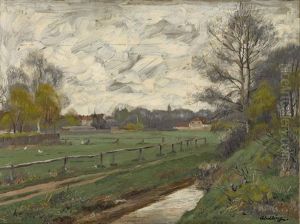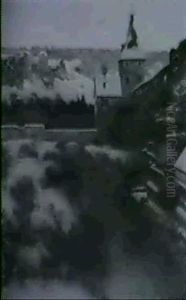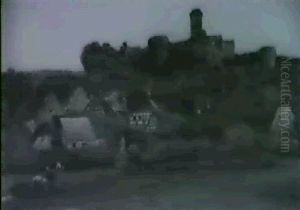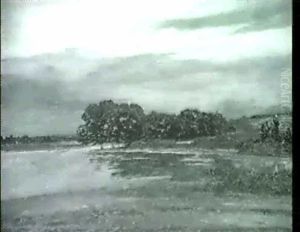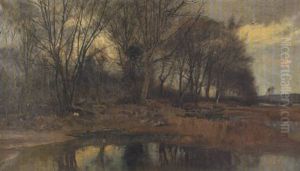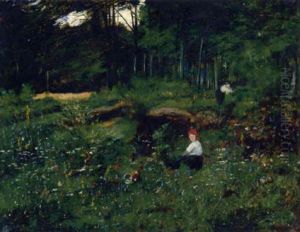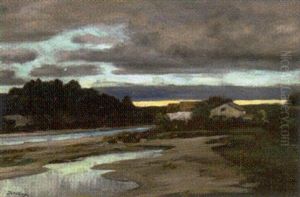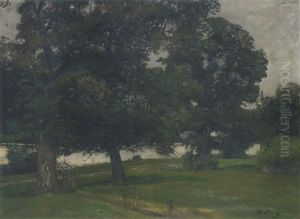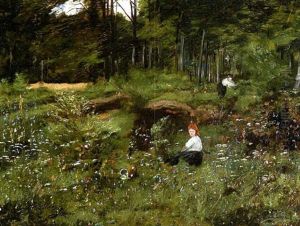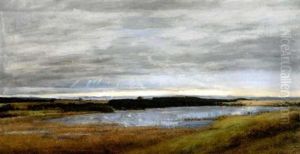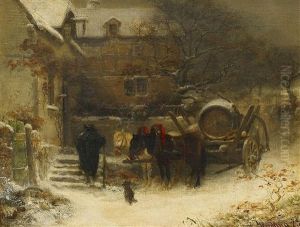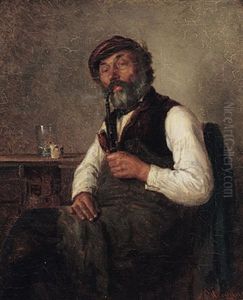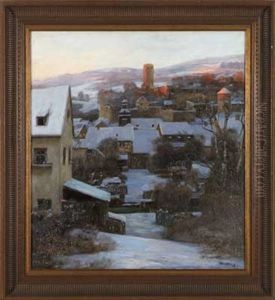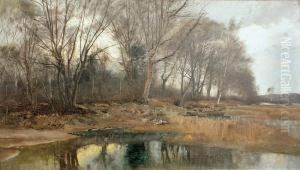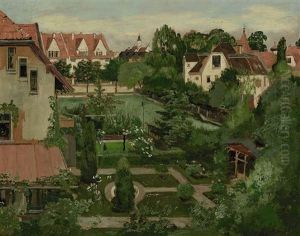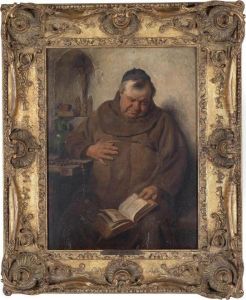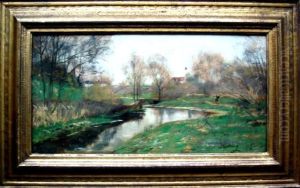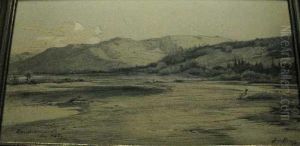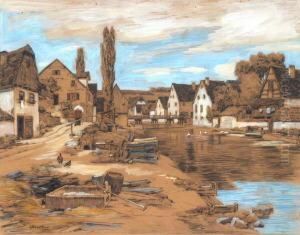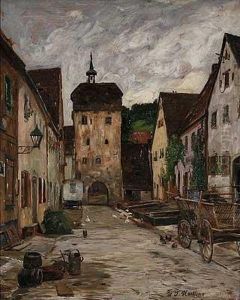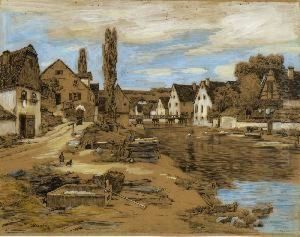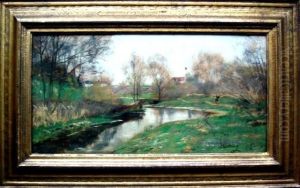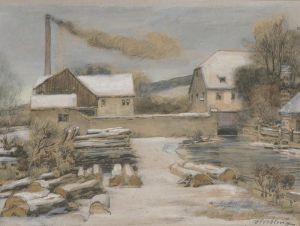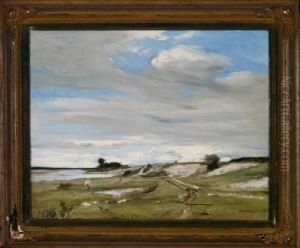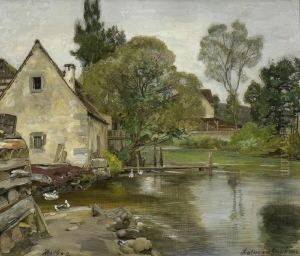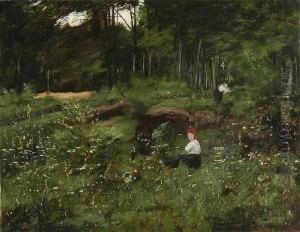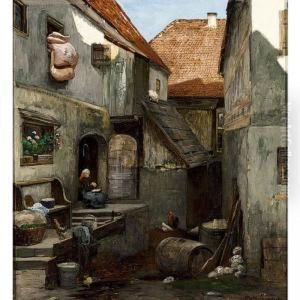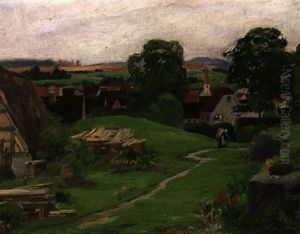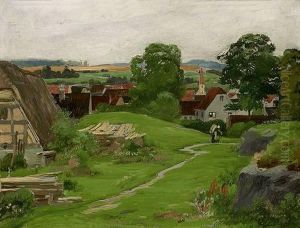Wilhelm Jakob Hertling Paintings
Wilhelm Jakob Hertling was a German painter, primarily known for his landscape and architectural paintings. Born in 1821, Hertling developed an early interest in the arts, likely influenced by the rich cultural atmosphere of Germany during the 19th century. His works are characterized by their detailed depiction of nature and historical buildings, capturing the essence of German romanticism and the burgeoning appreciation for natural beauty of the time.
During his lifetime, Hertling was part of a movement that sought to preserve and celebrate the German landscape through art. This was a period when the natural world became a significant source of inspiration for artists, and Hertling's paintings reflect this shift in artistic focus. His ability to blend realism with a sense of emotional depth set his works apart, making them highly valued among art collectors and enthusiasts of the era.
Hertling's education in art and his subsequent career were marked by travels across Germany and parts of Europe, where he sketched and painted various landscapes and historical sites. These travels not only expanded his artistic repertoire but also deepened his understanding of the cultural and historical significance of the locations he depicted.
Throughout his career, Wilhelm Jakob Hertling exhibited his works in various galleries, gaining recognition and accolades for his contributions to German art. His paintings today can be found in museums, galleries, and private collections, serving as a testament to his skill and dedication to portraying the beauty of the natural and built environment.
Wilhelm Jakob Hertling passed away in 1900, leaving behind a legacy that continues to inspire artists and art lovers alike. His work remains an important part of the study of 19th-century German art, demonstrating the power of painting to capture and preserve the spirit of a place and time.
